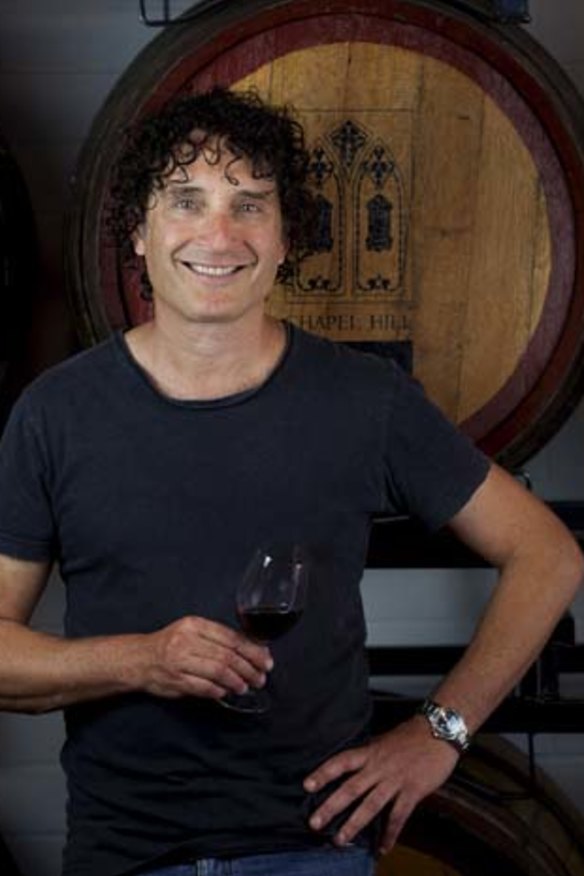Winemaker pushes the boundaries
Winemaker Michael Fragos continues to test the boundaries with his trials and experiments.

Few winemakers go to the trouble to inform the wine trade and media as much as Chapel Hill's Michael Fragos. No doubt he hopes the retailers, sommeliers, writers and sales reps he meets will pass on what they learn.
The steady stream of winemakers who visit the capital cities provide a valuable resource to members of the trade and press: a subtle, continual and - more to the point - free education.
Some winemakers make an effort to give the trade extra information - special insights into the viticultural and winemaking processes. Brian Croser, first at Petaluma, now Tapanappa, is one of the best. Through intelligent talk and tastings he has always tried to teach something, and is often challenging.
Michael Fragos is one of the best of the next generation. He comes to town once a year, ostensibly to introduce his new releases, but always has some trial wines to show and discuss. Three years ago, he produced a trial on fermentation extraction techniques. He showed us, blind, the same shiraz that had been fermented three ways: by plunging the cap (also known as punch-down), by pumping over, and by roto-fermenter (or Vinomatic). The wines were all good: Chapel Hill makes damn good reds, after all. But the tasting proved beyond question that plunging the cap gave the best result.
It is also the most expensive way. Grape skins always want to rise to the surface, because the carbon dioxide pushes them up. It takes manual effort, several times a day, to use a plunger to push the skins down under the bubbling mass of fermenting wine. And there's a limit to the container size when you use this technique: even muscular blokes can plunge only a certain weight of heavy skins.
The other wines were good, but the fleshiness, the extract, the gravitas of the plunged wine placed it in a higher class. It's not just a matter of tannin, but of density, the way the tannins and other matter integrate into the wine to give it substance.
Fragos' final word was not to pretend that all Chapel Hill reds are fermented this way, but to point out that pump-over or roto-fermenter can be cost-effective ways to make less-expensive wines, such as Chapel Hill's Parson's Nose Shiraz (the 2011 is great value at $16; 88/100).
Over the years, Fragos has presented many intriguing trials - on filtration and fining, on barrel sizes, on saignee (running juice off a fermentation to concentrate a wine), on stalk inclusion, fermentation temperatures, yeast trials (wild fermentations versus cultured yeasts), clarification techniques and more.
This year, he served us a 2013 McLaren Vale grenache fermented in three container sizes: five tonnes, 2.5 tonnes and half a tonne. The title of the exercise was: ''Does size matter?''
It seemed to me the half-tonne fermenter - which incidentally had the thickest cap of skins, because of the shape of the vessel - was lightest in colour and had lighter body, softer tannin and a more confectionery-like grenache fruit character. The 2.5-tonne fermenter, with the thinnest cap, had good colour and high viscosity, with stronger and arguably more abrasive tannins. The five-tonne fermenter with medium cap thickness was dark, with the most tannin, and powerful, with a greater complexity of flavour and aroma. This was Fragos' favourite.
I, like most of the tasters, guessed them wrongly, but it didn't matter. There was no right or wrong. Here were three wines vinified slightly differently, all good, and each with its merits. Vive la difference.
The message was conveyed by a second ''Does size matter?'' exercise, this time with barrels. The same 2013 McLaren Vale shiraz, stored in four barrels of different sizes from the same French cooper (Boutes). These were a 225-litre barrique, a 300-litre hogshead (traditionally favoured by Australian winemakers), a 500-litre puncheon - all new - and, last, a four-year-old hogshead.
Which wine you preferred probably depended on your tolerance for new-oak aroma and flavour. The barrique was clearly the oakiest wine. But it was also powerful, dense and deeply coloured - new oak helps fix colour. Most of us preferred the new hogshead or the puncheon. I found the older hogshead to have a slight bitterness. But there wasn't much between them in quality.
Fragos then presented an egg-white fining trial and a cork versus screwcap comparison. All interesting; all stories for another day.
Fragos is always experimenting. His aim is to use various methods to increase the complexity of his wines, both flavour-wise and texturally. ''Fruit purity, varietal definition, and McLaren Vale regional character are all important, but I want to make wines that are a bit more stylish, a bit more complex,'' he says. ''It's important to control the trials, to not do everything differently at the same time; otherwise, you can lose sight of what you started with.''
Changes are small and cumulative. ''Putting together several one-percenters can make a difference.''
The proof is in the pudding, Chapel Hill wines are very good indeed.
2009 Chapel Hill The Vicar Shiraz, $75
Deep red-purple; excellent colour. Rich, ripe, smoky earth and plum aromas, rich and profound. The palate is dense and concentrated, chewy and packed with flavour and tannin. Lots of oak. Big, gutsy shiraz, with a welter of tannins. Will richly reward cellaring. Now to 2032. 94/100.
huonhooke.com
